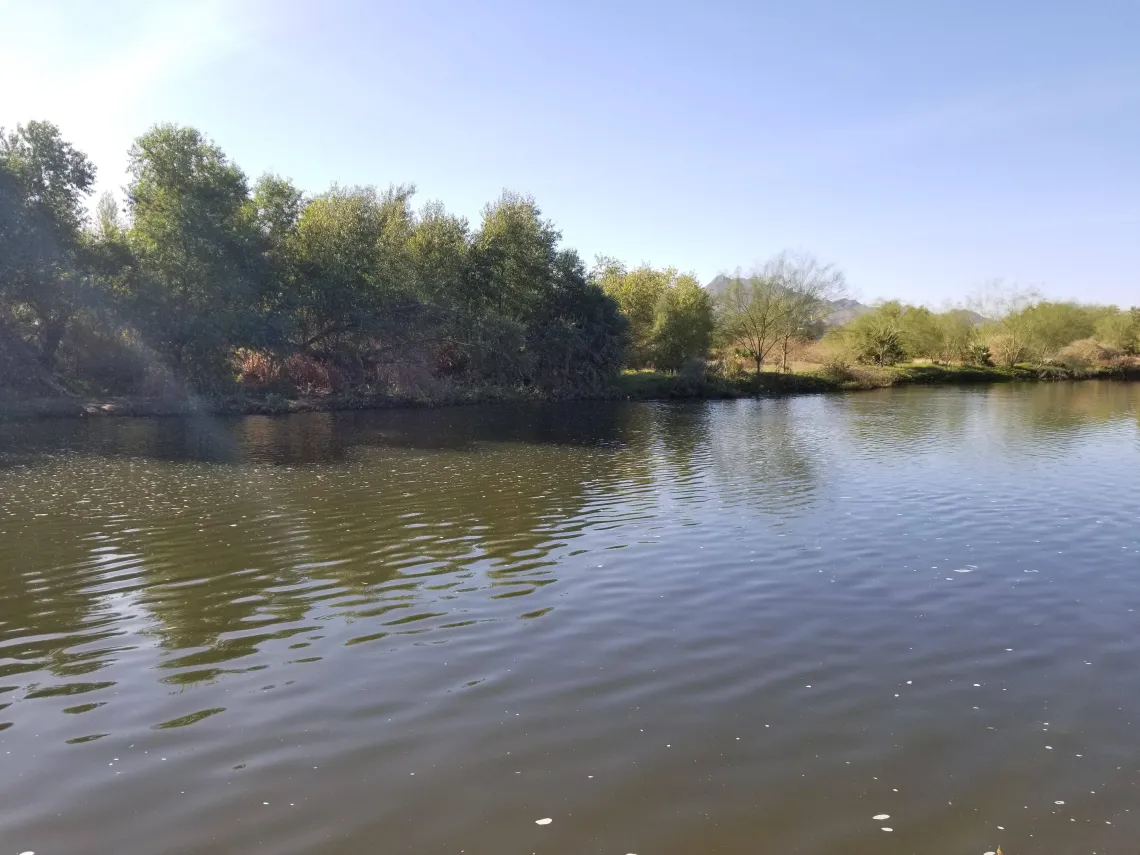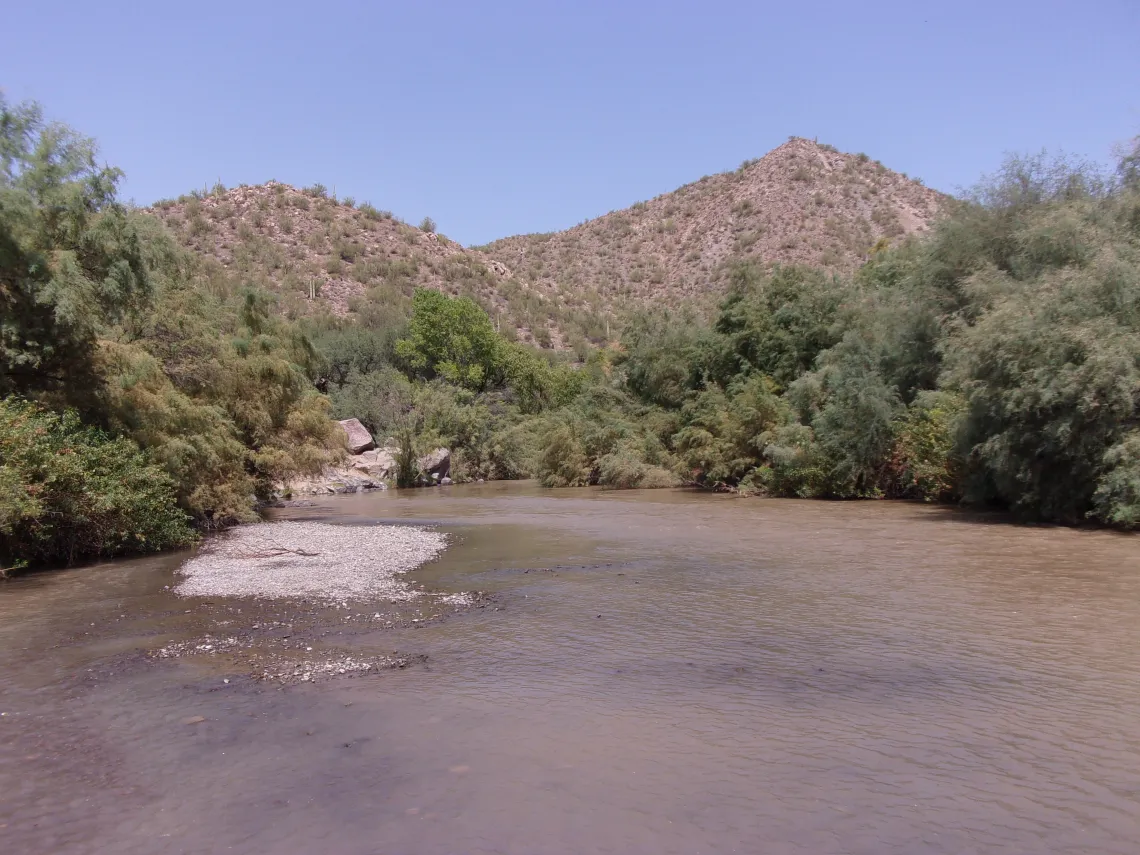Water scarcity and the role of climate adaptation planning to support ecosystems and people in the Gila River Watershed, Arizona

People and the environment are inextricably linked making natural resource management incredibly important but also complicated. In arid and semi-arid climates, water is often challenging to manage for the benefit of both people and nature. Balancing these concerns well is aided by deliberate planning, actions, and collaboration among diverse groups of stakeholders.
A fellowship, funded by the Southwest Climate Adaptation Science Center (SW CASC) for the 2019-2020 academic year, attempted to address these issues. The Natural Resources Workforce Development (NRWD) Fellowship brought together students from 7 consortium universities to collaborate on use-inspired and actionable science to inform natural resource management decisions. Their recently published report examines the challenges and opportunities that came about from this research.
Using the Gila and San Pedro Rivers within Arizona as a case study, this report discusses the potential of climate adaptation planning to address and mitigate the impacts of future climate change on people and ecosystems. The fellows examined these themes by a) reviewing publicly available stakeholder documents, b) surveying stakeholders and rightsholders, and c) summarizing future climate projections.
Results from both the literature review and stakeholder survey show ‘water quantity’ is a top concern across the Gila and San Pedro River basins, specifically instream flow and water supply. Stakeholder documents showed a commitment to ‘water management’ and ‘alteration and restoration’-based solutions. At the time of the survey, only 37% of survey respondents indicated they have a climate adaptation plan. However, almost all respondents indicated climate projections would directly benefit their work.
This report also details projected future values of monthly mean precipitation for the basin with resulting impacts for the Upper Gila River: spring river flows are projected to decrease dramatically, by 37% of historical values, near the end of the 21st century. However, there were no significant trends in annual flow volume, but variability from year-to-year is projected to increase.

Overall, this investigation suggests that stakeholders within the river basins are united by concerns related to water quantity, interest in management-based solutions, and a willingness to collaborate, even with some concerns of competing goals and strategies. Despite a high willingness to collaborate, collaborative efforts between stakeholders were common but were not distributed equally across the basin. This is most notable in a lack of collaborations between Tribal and non-Tribal communities. The Gila River Indian Community (GRIC) located along the Gila River has a robust climate adaptation plan, suggesting that outside organizations can benefit from collaboration with GRIC and other Tribes.
This report advocates for increased collaboration between stakeholder groups within the Gila and San Pedro River basins, particularly collaborations that seek to include Tribal Nations. These efforts will aid climate change adaptation and will help ensure that the benefits of restoration and adaptation do not occur in isolation, but are shared by the communities and people united by the river.

